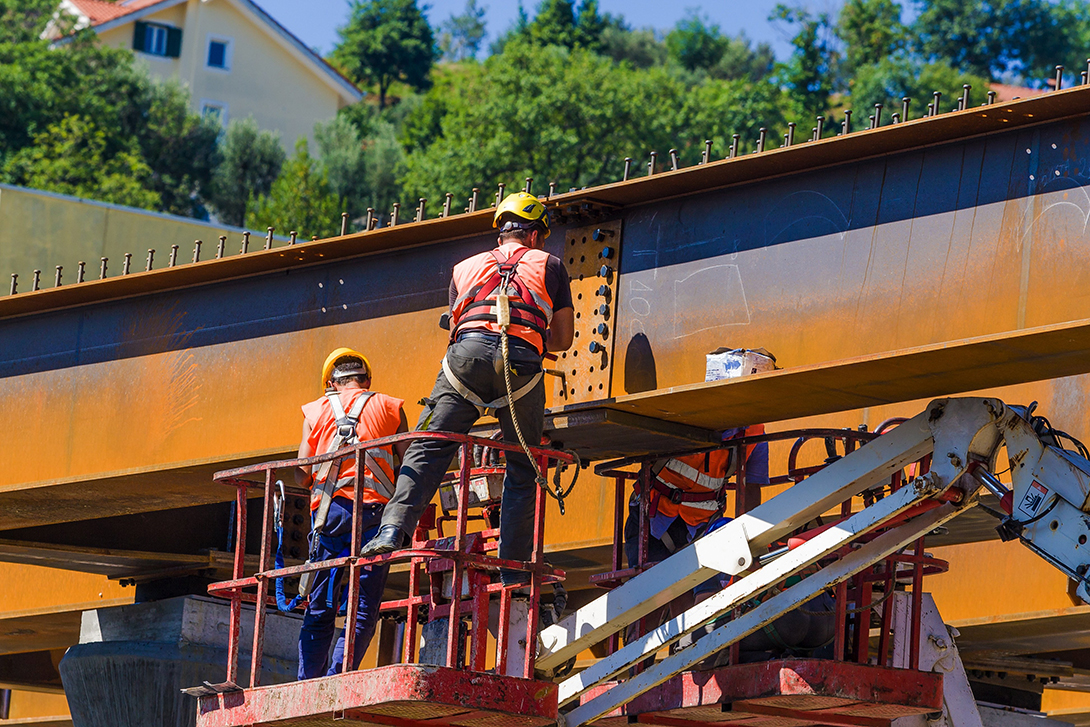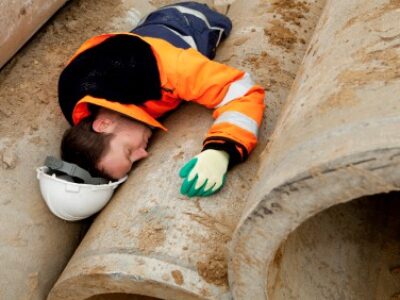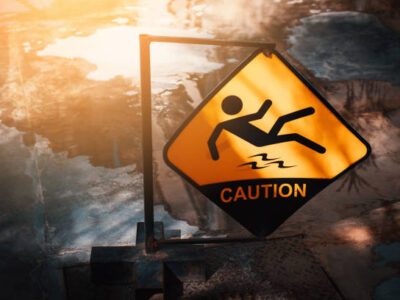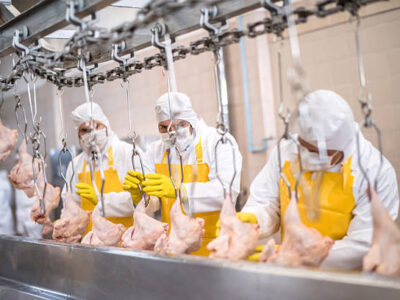If you work in construction, you know one thing for certain: you do not want to fall. Falling from a height during a construction project is one of the most common causes of death among workers and continues to happen more frequently than any other type of accident.
You may be fortunate that you have not fallen or witnessed the death or injury of a co-worker who fell from a height. However, if your California employer fails to provide protective equipment or training to prevent falls, your chances of falling increase.
Why Falls Are So Deadly
It may be difficult to complete a career or even a day in construction without some injury. A blade may cut your hand, you may drop a tool on your foot, or you may trip on debris and take a ground-level fall. You may even suffer more serious injuries, for example, if a vehicle or large machinery strikes you.
However, falls from a height of six feet or higher place you at greater risk of injuring more than a single part of your body. In fact, such a fall may result in multiple critical injuries, including:
- Traumatic brain injury (TBI) may result in cognitive impairment or permanent disability.
- Spinal cord damage can cause paralysis or loss of mobility.
- Internal bleeding and organ rupture often require emergency surgery.
- Complex fractures, including shattered pelvises or broken vertebrae.
- Chronic pain or post-traumatic stress disorder (PTSD) that lingers long after the accident.
According to the Bureau of Labor Statistics, falls remain the leading cause of construction fatalities, representing 37% of all construction-related deaths in recent years. OSHA notes that scaffolding accidents alone injure more than 60 workers every day in the United States. A fall from 30 feet or more often carries less than a 50% chance of survival, and even non-fatal falls leave many workers permanently disabled.
Compared to other job-site accidents, such as electrocutions, being struck by heavy equipment, or being caught between machinery, falls consistently account for the highest fatality rates. This makes them both the most common and the most devastating hazard in construction.
Common Scenarios Where Falls Occur
Falls do not happen in isolation. They usually occur in predictable circumstances, including:
- Roofing projects where unprotected edges or slippery surfaces increase risk.
- Scaffolding accidents are caused by poor assembly, unsecured planks, or missing guardrails.
- Ladder falls resulting from unstable positioning or failure to secure footing.
- Crane and lift operations, where improper harnessing can lead to deadly accidents.
- High-rise construction sites, where even a small misstep can cause a catastrophic fall.
Understanding these scenarios highlights just how many parts of the jobsite require consistent safety oversight.
Employer Responsibility and Safety Compliance
Despite the rise in fatal falls on construction sites and state and federal safety mandates, construction employers continue to overlook the fundamental safety rules. Under OSHA and Cal/OSHA regulations, employers are legally required to provide safe working conditions, fall protection, and training for workers.
Fall prevention begins with proper planning, supervision, and enforcement of safety measures. Employers must provide and maintain:
- Fall arrest systems, such as harnesses, lifelines, and lanyards that are tested and regularly inspected.
- Guardrails, safety nets, and perimeter screens to prevent unprotected edges.
- Stable scaffolding built according to OSHA guidelines, with secure platforms and guardrails.
- Adequate lighting on night shifts or in dimly lit work zones to reduce missteps.
- Daily inspections of ladders, harnesses, and scaffolding for signs of wear or structural failure.
- Regular site walk-throughs to identify and remove debris, slick surfaces, or loose materials.
- Updated safety training for every worker, including specific training for ladders, scaffolds, and aerial lifts.
- Ongoing communication and refresher courses to ensure compliance with fall protection protocols.
In recent years, new technologies have been introduced to enhance safety, including wearable devices that detect sudden falls, drones that perform overhead safety inspections, and digital apps for real-time reporting of hazards. Employers who fail to adopt even basic precautions, let alone advanced safety methods, are putting workers at serious risk.
The Human and Financial Toll of Falls
A single construction fall can change a life forever. The aftermath often involves:
- Medical expenses for hospitalization, surgery, rehabilitation, and long-term care.
- Loss of income due to extended recovery or permanent disability.
- Reduced earning capacity, especially for skilled trades that require full mobility.
- Emotional consequences, including depression, anxiety, or PTSD.
- Family hardships, when dependents suddenly lose their primary source of financial support.
The economic and human impact extends far beyond the individual worker. Families face mounting bills, uncertainty about the future, and the emotional burden of adjusting to a new reality.
Legal Options After a Construction Fall
The cost of a catastrophic fall for a construction worker and their family can be overwhelming. Hospitalization, emergency surgery, rehabilitation, and long-term disability care can quickly add up to hundreds of thousands of dollars. Beyond medical expenses, injured workers often face months or years of lost income, reduced earning capacity, and significant emotional suffering. Families of deceased workers may struggle with the sudden loss of financial support.
After a fall accident, workers and families may be entitled to:
- Workers’ compensation benefits cover medical care, wage replacement, and permanent disability.
- Death benefits are provided for the surviving family members of workers who died on the job.
- Third-party lawsuits, such as claims against subcontractors, negligent property owners, or manufacturers of defective equipment.
- Wrongful death actions to recover damages for loss of companionship, funeral costs, and financial dependence.
The process is not always simple. Workers may face employer retaliation if they report unsafe working conditions or attempt to file a claim. Others may encounter delays, claim denials, or disputes about the cause of the accident. In California, workers are legally protected against retaliation for filing safety complaints or pursuing compensation. If your employer discourages you from reporting unsafe conditions or denies responsibility after an accident, you still have legal options.
FAQs: Construction Fall Accidents
What is the leading cause of construction falls?
Most falls occur due to unprotected roof edges, unstable scaffolding, or the lack of fall protection equipment, such as harnesses and guardrails.
At what height is fall protection required in California?
Cal/OSHA mandates fall protection for construction work at elevations of six feet or higher, while specific rules apply to scaffolds, roofing projects, and aerial lifts.
Can I sue my employer directly for a fall accident?
Generally, workers’ compensation is the exclusive remedy against your direct employer. However, you may have the right to sue a third party — such as a negligent contractor, property owner, or equipment manufacturer — if their actions or products caused the fall.
What benefits can my family claim if a worker dies from a fall?
Surviving family members may be eligible for workers’ compensation death benefits, and in some cases, a wrongful death claim against negligent third parties.
What steps should I take immediately after a fall?
Seek urgent medical attention, report the accident to your employer, document the unsafe conditions, gather witness accounts, and consult an attorney before accepting any settlement or signing legal paperwork.
What if my employer refuses to provide fall protection or denies my claim?
You have the right to file a safety complaint with Cal/OSHA and to pursue legal action. An attorney can guide you through appeals and ensure your rights are protected.
Protect Your Rights With Legal Guidance
When seeking financial compensation after such an accident, you need an experienced legal advocate. The attorneys at Hussain & Gutierrez are committed to protecting construction workers and their families. As seasoned California construction accident attorneys, we are well-versed in OSHA regulations, workers’ compensation claims, and third-party liability.
Our legal team will investigate your accident, secure evidence of employer negligence, and hold all responsible parties accountable. Whether you are facing mounting medical bills, permanent disability, or the tragic loss of a loved one, we fight for the maximum recovery you deserve.
Contact Hussain & Gutierrez today for a consultation and take the first step toward protecting your future after a fall at a construction site.



